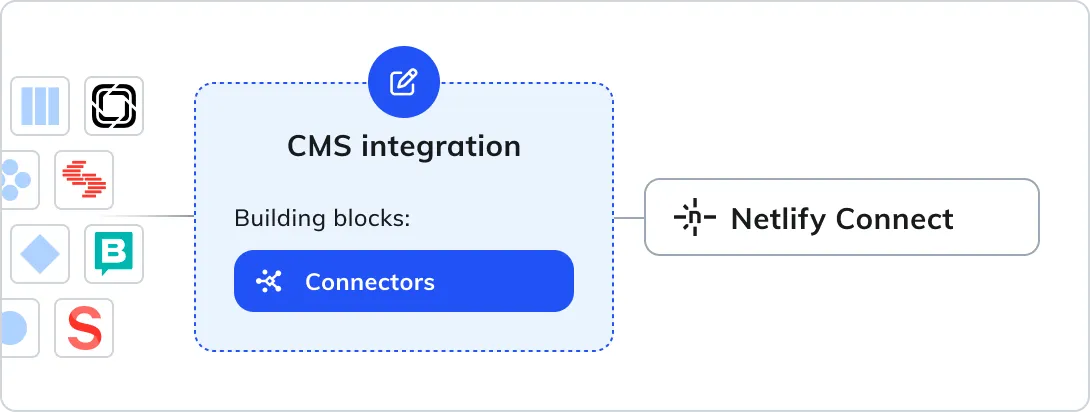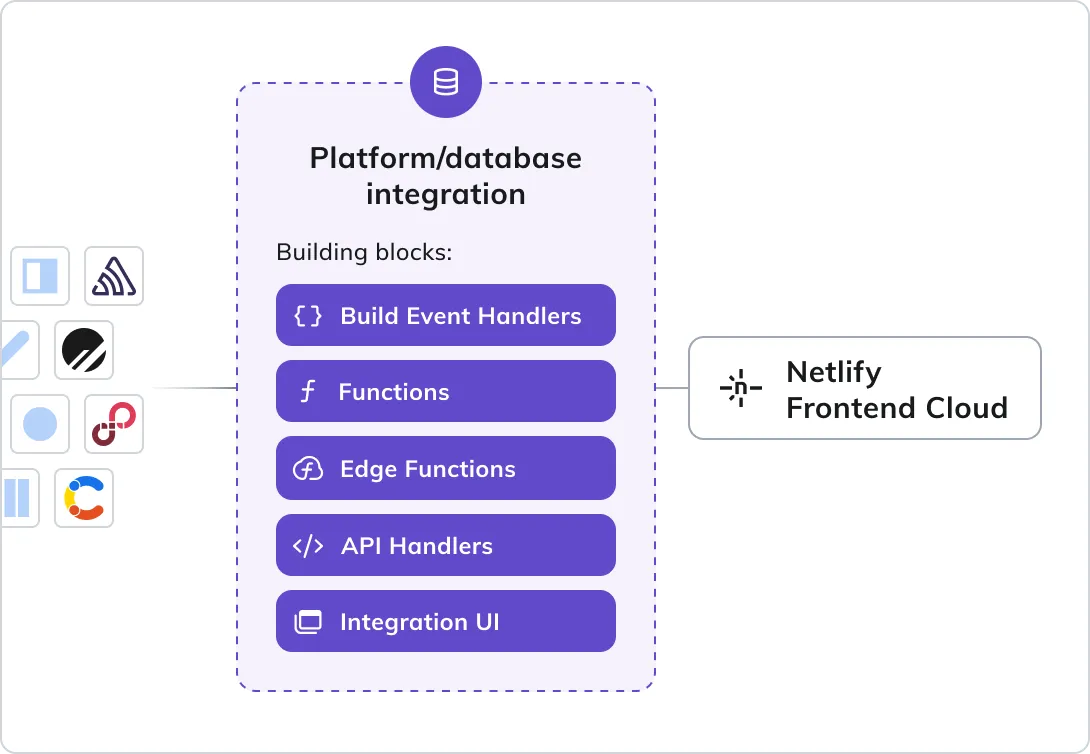Introduction
Welcome to the Netlify SDK, the toolset for developing Netlify Integrations.
Integration use cases
Netlify Integrations extend the capabilities of the Netlify platform and streamline developer workflows. For example:
- Custom data source for Netlify Connect. Connect to and sync data from any data source including both third-party services and proprietary solutions.
- Content generation. Create sitemaps, RSS feeds, or search indexes as part of the build process.
- Quality assurance. Check for broken links in a site after the build completes but before the site is deployed.
- Runtime observability. Monitor serverless function activity with an integration wrapper.
- Installation process automation. Simplify the workflow for developers using your service with Netlify by doing things like generating required environment variables automatically instead of asking users to set them manually.
- Run on-demand, server-side code without a dedicated server. Leverage serverless functions, including background and scheduled functions, to add APIs and services to sites.
- Security or performance optimizations added at the network edge. Leverage Edge Functions to add extra bot and fraud protection, cache optimizations, and more.
These are just a few examples of how you can accelerate your business through Netlify Integrations built with the Netlify SDK.
Integration architecture
As an integration developer, you create and make available an integration that Netlify users then install on their sites or teams.
An integration includes one or more of the following components:
- Connectors: connect to and sync data from a custom data source to Netlify Connect.
- Build Event Handlers: run JavaScript code in response to different events in Netlify’s build-deploy lifecycle.
- Functions: inject serverless functions during a site’s build step to run logic and take care of batch or scheduled tasks.
- Edge Functions: inject edge functions during a site’s build step and run logic at the network edge.
- API Handlers: use serverless functions to perform dynamic actions.
- Integration UI: provide an interactive surface in the Netlify app where users can configure and provide context for your integration.
The Connectors component is typically used on its own to make integrations for Netlify Connect.

The Build Event Handlers, Functions, Edge Functions, API Handlers, and Integration UI components are typically used together to make integrations for the rest of the Netlify platform.

Integration availability
- To contribute to the composable architecture ecosystem, you can publish Partner Integrations through our technology partner program for other Netlify users to enjoy.
- You can publish integrations for propriety systems and solutions as Private Integrations for only your Netlify team to use.
- The Netlify SDK is available to all team plans for building integrations.
- Netlify Integrations that are published in the Netlify UI are available to all team plans for installation.
- However, you can build integrations that interact with features that are only available on certain team plans. For example, the Connectors component integrates with Netlify Connect, which is only available on
Connect Enterpriseplans. - You can also build integrations that leverage features that will impact the integration user’s feature usage and billing, such as Functions and Edge Functions.
SDK workflow
Here’s a typical workflow for developing an integration with the Netlify SDK:
- Create a new integration with the Netlify SDK utility tools to get boilerplate files for the components you want to use in your integration. Or, start with one of our templates to create and deploy a sample integration in one step.
- Customize the generated code to add Connectors, Build Event Handlers, Functions, Edge Functions, API Handlers, or Integration UI, and tailor them to the goals of your integration.
- Customize the authentication and enablement flow to fit the needs of your integration.
- Test and debug your integration to make sure it’s working as intended.
- Build your integration to get it ready for publishing.
- Start the process of publishing your integration.
Next steps
- Review the requirements and limitations before you create your first integration.
- Explore the component docs to learn more about working with Connectors, Build Event Handlers, Functions, Edge Functions, API Handlers, and the Integration UI.
- Learn about high-level use cases for the Integration API before reading more in our API reference docs.
- Reach out to our technology partner program if you have any questions about getting started with using the Netlify SDK to develop Netlify Integrations.